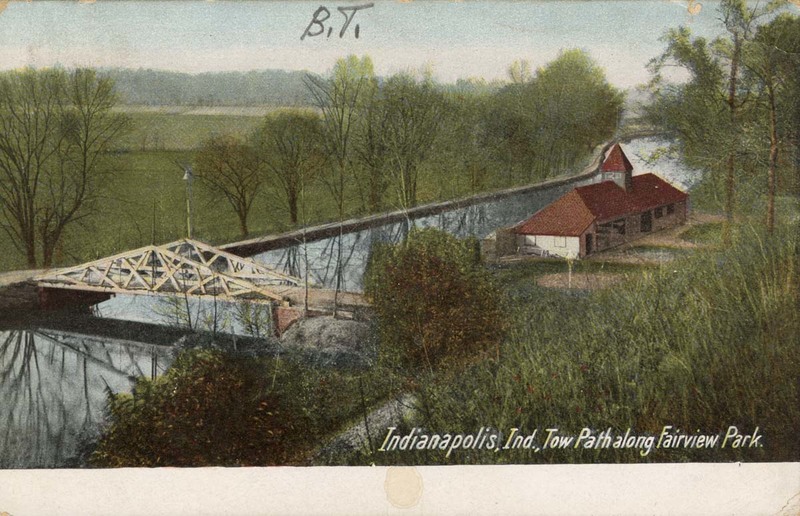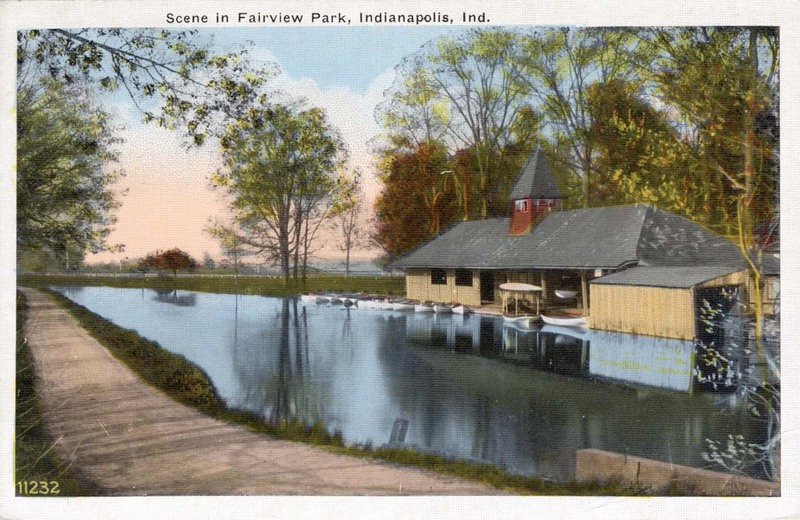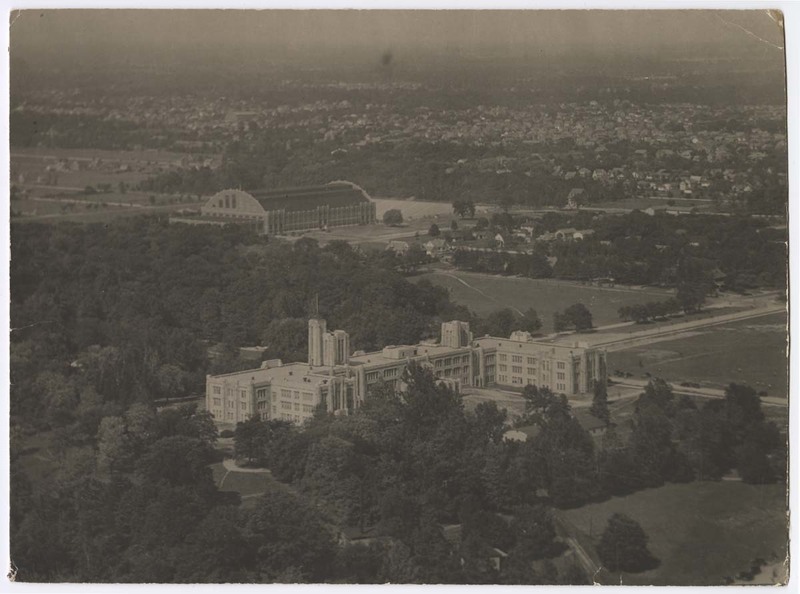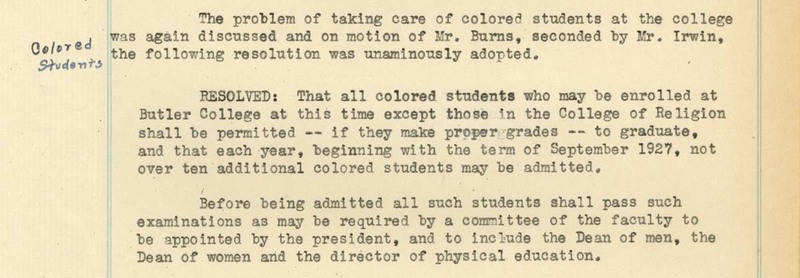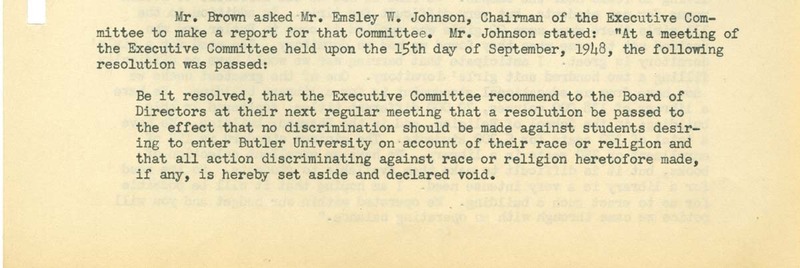A New Campus and New Hardships
In 1928 after years of fundraising and planning, Butler University officially moved to its third—and present—campus located on the north side of Indianapolis. The site had previously been Fairview Park, a trolley park owned by the Indianapolis Street Railway Company. The campus opened with two major buildings: Arthur Jordan Memorial Hall (commonly referred to today as Jordan Hall) and the Butler Fieldhouse (renamed Hinkle Fieldhouse in 1965).
The Quota at Butler University (1927–1948)
In 1927—a year prior to moving to the new campus—University President Robert J. Aley instituted a quota for Black students: only ten students per year would be admitted, and they had to have three letters of recommendation from substantial citizens.
The reasons for creating the Butler quota are obscure. While other universities in the United States were instituting similar race-based quotas at this time, their influence on Butler’s own decision-making process is unknown. Board of Directors’ meeting minutes and other surviving University documents do not explain the motives—either institutionally or individually—for the creation of the quota.
Some Black students got around the quota by enrolling in the School of Religion—now the Christian Theological Seminary—which had no quota. The quota system stayed in place until after World War II, when President M. O. Ross lifted it in 1948. The number of Black students did not increase significantly until the 1960s and the coming of the civil rights era.
Below are excerpts from the Butler University Board of Directors (Board of Trustees) minutes that discuss the quota: July 13, 1927, when the quota was instituted; September 15, 1948, when the Executive Committee initially voted to rescind the quota; and October 13, 1948, when the quota was officially abolished.
Content Warning: Please be advised that the language related to race used in these excerpts from the Butler University Board of Directors (Board of Trustees) meeting minutes—specifically from the 1927 entry—is racist and offensive and may cause distress. We are providing record of these excerpts for historical documentation and transparency on the issue of the quota at Butler University. If the viewer wishes to skip the entries, please scroll directly to the bottom of the page and use the Next button to proceed to the next section of the exhibit.
